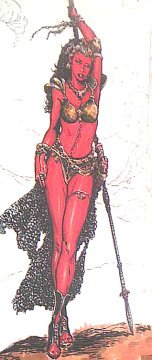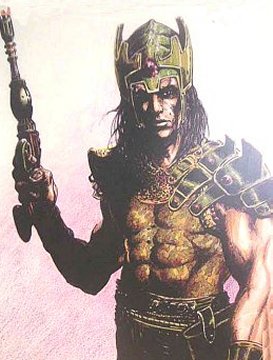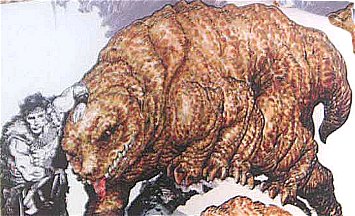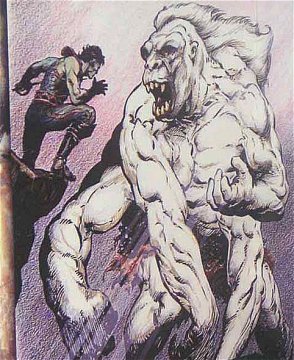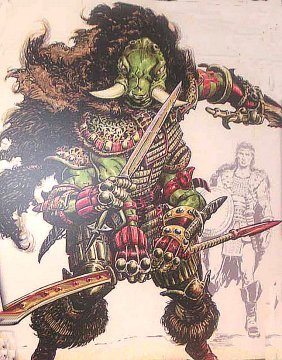From apes to fish:
The life and times of 'What's his name'
By Mike Leonard, Hoosier Times
July 4, 2004
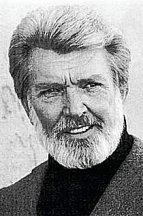 Denny
Miller is fond of the aphorism, "Life is what happens to you
when you're on your way to do something else."
Denny
Miller is fond of the aphorism, "Life is what happens to you
when you're on your way to do something else."
The Bloomington native wasn't thinking about much more
than being a basketball player for John Wooden's UCLA Bruins and aiming
toward a career in physical education when a talent scout stopped him on
the street and asked to see his hairline.
Months later, Miller would become Tarzan, star of Tarzan
- The Ape Man, the 1959 film he jovially calls the worst Tarzan
movie ever made until Bo Derek and her husband, John, took a swing at the
venerable character in 1981.
"I was a misplaced basketball player and I was frightened
to death by what I was doing," he confessed recently.
But Miller continued in acting and carved out an enviable
career as a character actor, ranging from a regular role as scout Duke
Shannon in the television series "Wagon
Train" on through numerous movie, television and commercial roles.
For the past 14-plus years, he's been the Gorton's Fisherman with a visage
so recognizable the company changed its logo to resemble the ruggedly handsome,
bearded actor who first greeted the world at Bloomington Hospital 70 years
ago.
The affable Hoosier wrote his memoirs recently and with
characteristic humility titled the autobiography, Didn't You Used
To Be What's His Name?
"I've always appreciated my life and my career but I don't
think I ever really appreciated things enough until I sat down and actually
read what I wrote and thought, 'My God, look at how lucky you are!'" he
marveled.
Miller was fortunate enough to have director George
Cukor give him his first screen test - and his first acting lesson.
And to have Cukor take him to dinner at the home of a fellow Hoosier, Cole
Porter, who regaled him with the theories on the origin of the Hoosier
moniker.
He was lucky enough to work with or get to know a dazzling
array of actors, including Katherine Hepburn, Bette Davis, Juliet Prouse,
Charles Bronson, Sidney Poitier, Jack Lord, Peter Sellers, Bob Hope, Lucille
Ball and many, many more.
They're all in the book, along with other anecdotes that
make one marvel at how many stories can come out of a life well-lived.
Like the time during a UCLA/North Carolina alumni basketball game when
Miller, the oldest man on the floor, found himself as the only defender
against a fast break led by Michael Jordan and James Worthy.
"I cupped my hands and yelled to the thousands (in attendance) - HELP!"
Miller writes.
Didn't You Used To Be What's His Name? is written
in a casual, folksy style that doesn't pretend to be anything more than
the memoirs of a man who's led what might be called a quietly extraordinary
life. When Waldron High School won the 2004 1A Indiana High School basketball
championship, Miller squeezed in a chapter to point out some fascinating
coincidences, including the fact that his father, Ben, and his identical
twin, Len, led Waldron to the 1927 state finals and another set of identical
twins led the 2004 team to its title.
Ben and Len Miller played for coach Branch McCracken
at Indiana University and played against Wooden, the Purdue player
who would become Denny's eventual coach and mentor. And at UCLA, Miller's
teammates included future Louisville coach Denny Crum and Olympic
decathlete Rafer Johnson.
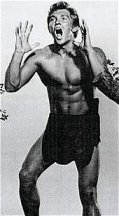 Still,
it's the Tarzan connection that seems to have the most staying power. "They
say there are four fictional characters known 'round the world - Batman,
Superman,
Mickey
Mouse and Tarzan," Miller said. There have been 20 different
Tarzans and three have hailed from the Hoosier state:
Elmo
Lincoln from the silent film days; James
Pierce, from Freedom in Owen County; and Miller.
Still,
it's the Tarzan connection that seems to have the most staying power. "They
say there are four fictional characters known 'round the world - Batman,
Superman,
Mickey
Mouse and Tarzan," Miller said. There have been 20 different
Tarzans and three have hailed from the Hoosier state:
Elmo
Lincoln from the silent film days; James
Pierce, from Freedom in Owen County; and Miller.
"It was a real honor to play Tarzan,
because he was one of the good guys," said Miller, who played a lot of
bad guys over the course of his career. "He was an environmentalist before
that word was even known. He was kind of a cross between Dr. Doolittle
and an Olympic athlete. And a few Tarzans were, in fact, Olympic gold medal
winners, including Johnny
Weissmuller, Buster
Crabbe and Glenn
Morris."
Despite the fact that a great many athletes prove to be
terrible actors, Miller sees a strong link between acting and sports. "They're
both team sports, actually. Even if you're doing a monologue and the guy
on the spotlight isn't with you, you're in the dark," he explained.
"There are stars in a movie or a play and there are stars
on a basketball team and supporting players," Miller said. "The coach is
the director."
Being athletic and handsome always helped Miller, and
for good genes and good values, he thanks his father, Ben, who became an
IU faculty member and, later, the chairman of the physical education department
at UCLA and president of the American Academy of Physical Education. "He
spent a great deal of his time trying to justify his field of study to
academia," Miller said.
The veteran actor continues to be an avid proponent of
physical fitness and he complains, passionately, that "We've become the
fattest and most overweight nation in the world and it costs our country
dearly in dollars and unfulfilled lives."
He's also become an ardent spokesman for mental health
after inexplicably being stricken with bouts of depression rather late
in life. "They say that there are 6 million men out there right now who
suffer from depression and will not seek help," Miller said. "At every
opportunity I get, I urge people to seek help. It's not a weakness. It's
a chemical imbalance in most cases. I'm just so grateful that mine is under
control."
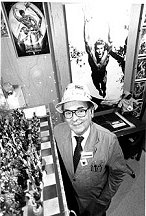 Although
technically,
Didn't You Used To Be What's His Name? is set for September
publication, it's available now on Miller's Web site at www.denny-miller.com
Although
technically,
Didn't You Used To Be What's His Name? is set for September
publication, it's available now on Miller's Web site at www.denny-miller.com
The author hopes to come through his home town on a book
tour this fall. A trip to the area seems logical, he said, especially given
that a close associate is George
T. McWhorter, curator of the Edward Rice Burroughs (Tarzan
creator) Memorial Collection
at the University of Louisville, KY.
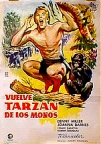


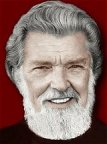
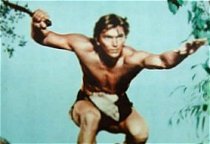
 We
enjoy your many flavored Zine. We also enjoyed Fort Collins. I taught one
summer at Fort Lewis College in Durango, CO. The past two summers we've
had a chance to drive though Colorado and have come to the conclusion that
it's the most beautiful state we've seen. Aspen, Vail, Uray, Durango remind
us of Norway and Switzerland. The air is clean, the water is clean and
so are the towns and even the roads. We plan to go back there soon.
We
enjoy your many flavored Zine. We also enjoyed Fort Collins. I taught one
summer at Fort Lewis College in Durango, CO. The past two summers we've
had a chance to drive though Colorado and have come to the conclusion that
it's the most beautiful state we've seen. Aspen, Vail, Uray, Durango remind
us of Norway and Switzerland. The air is clean, the water is clean and
so are the towns and even the roads. We plan to go back there soon.

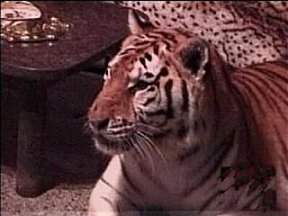 The
owner of the 6-year-old male tiger, Steve Sipek, accused the wildlife officers
of acting too quickly. He said they should have waited for an officer with
a tranquilizer gun who might have saved the animal.
The
owner of the 6-year-old male tiger, Steve Sipek, accused the wildlife officers
of acting too quickly. He said they should have waited for an officer with
a tranquilizer gun who might have saved the animal.
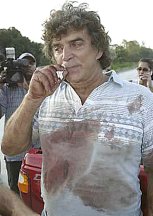
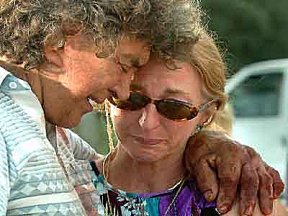
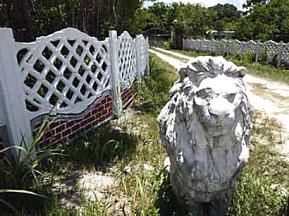
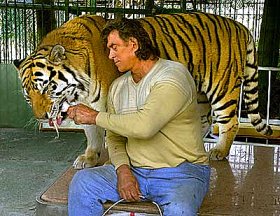
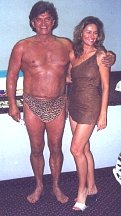 The
cat was reported missing from Steve Sipek's residence, which is near a
wilderness area about 15 miles west of West Palm Beach. Sipek has another
tiger, two lions, a black leopard and a cougar on his 5-acre property,
the Palm Beach Post reported. The cats, mostly castoffs from zoos, are
in a mazelike series of interlocking cages.
The
cat was reported missing from Steve Sipek's residence, which is near a
wilderness area about 15 miles west of West Palm Beach. Sipek has another
tiger, two lions, a black leopard and a cougar on his 5-acre property,
the Palm Beach Post reported. The cats, mostly castoffs from zoos, are
in a mazelike series of interlocking cages.
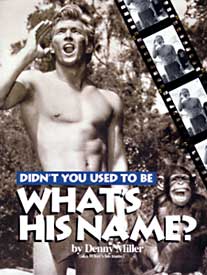
 Still,
it's the Tarzan connection that seems to have the most staying power. "They
say there are four fictional characters known 'round the world - Batman,
Superman,
Mickey
Mouse and Tarzan," Miller said. There have been 20 different
Tarzans and three have hailed from the Hoosier state:
Still,
it's the Tarzan connection that seems to have the most staying power. "They
say there are four fictional characters known 'round the world - Batman,
Superman,
Mickey
Mouse and Tarzan," Miller said. There have been 20 different
Tarzans and three have hailed from the Hoosier state:
 Although
technically,
Didn't You Used To Be What's His Name? is set for September
publication, it's available now on Miller's Web site at
Although
technically,
Didn't You Used To Be What's His Name? is set for September
publication, it's available now on Miller's Web site at 


